Written summary and photos by Bill Miller.
Ray Uberecken and Bill Miller went to the Plishner site on Sat. October 31.
Ray brought back his EME 200 Watt amplifier box that he had removed on the previous weeks trip. The unit had blown a relay control FET that kept the unit in the transmit position so it would not connect the feed to the receiver. Ray and Bill donned climbing harnesses, scaled the scaffold, and installed the amplifier before the wind could start blowing about 11:00 AM at the site.
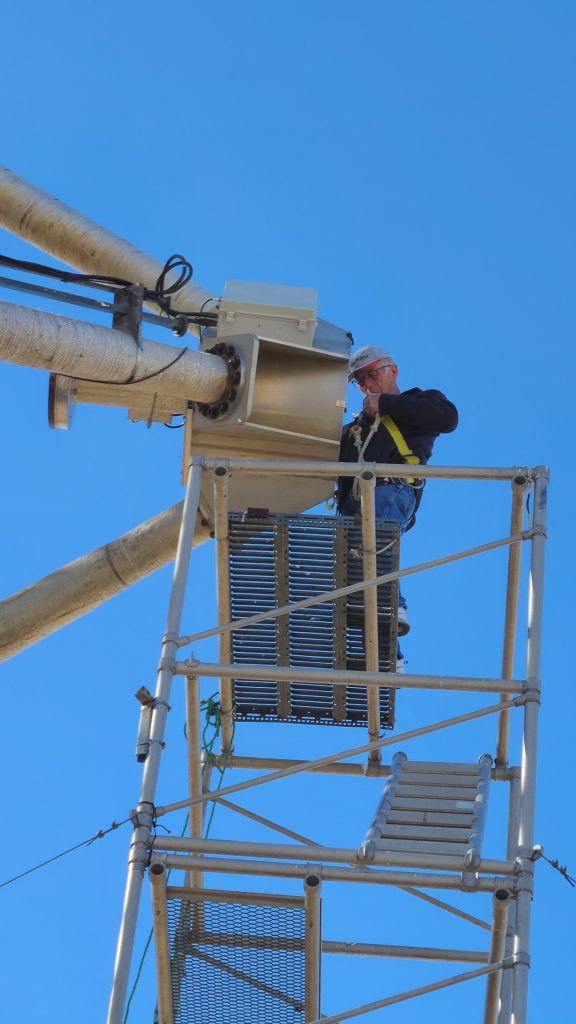
Ray also brought back the FT 736 Transceiver after repairing the seized tuning knob. He brought in a computer and an audio interface with JT-65 HF software loaded. This will enable digital mode EME on the next contest EME 50-1296 MHz — November 28-29, 2020. In addition, he installed an extra 1296 MHz 18 Watt auxiliary amplifier between the FT736 10W max output and the Amplifier at the feed point. This extra amplifier will enable the full power of the linear amp at the feed. Both the 18 watt amp and the 200 watt feed point amp are enabled with the Key circuit from the FT 736.
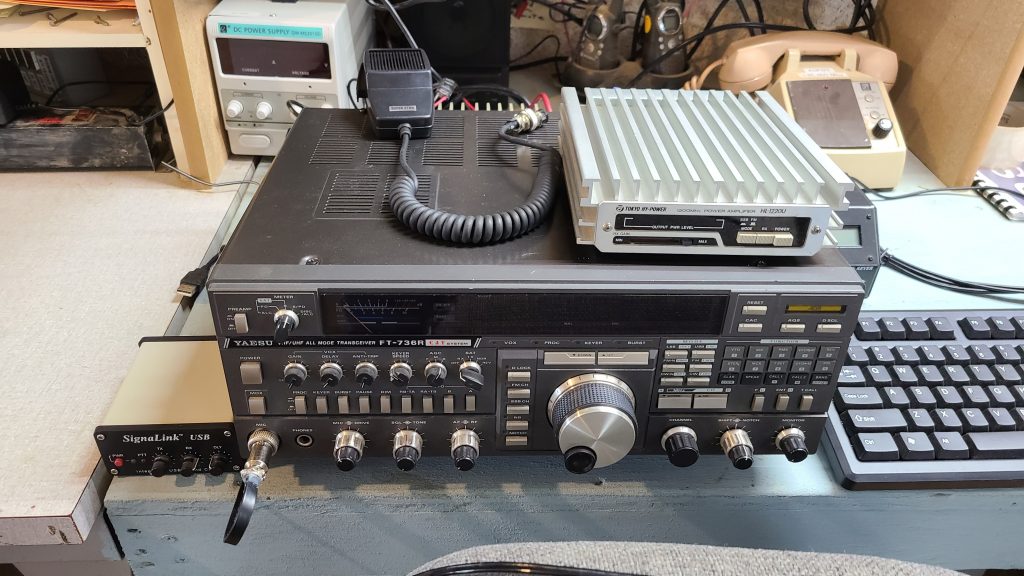

There is an extra power supply on the bench to power the 18 Watt amp and the key circuit to the feed amp is attached with the terminal block on the rack.
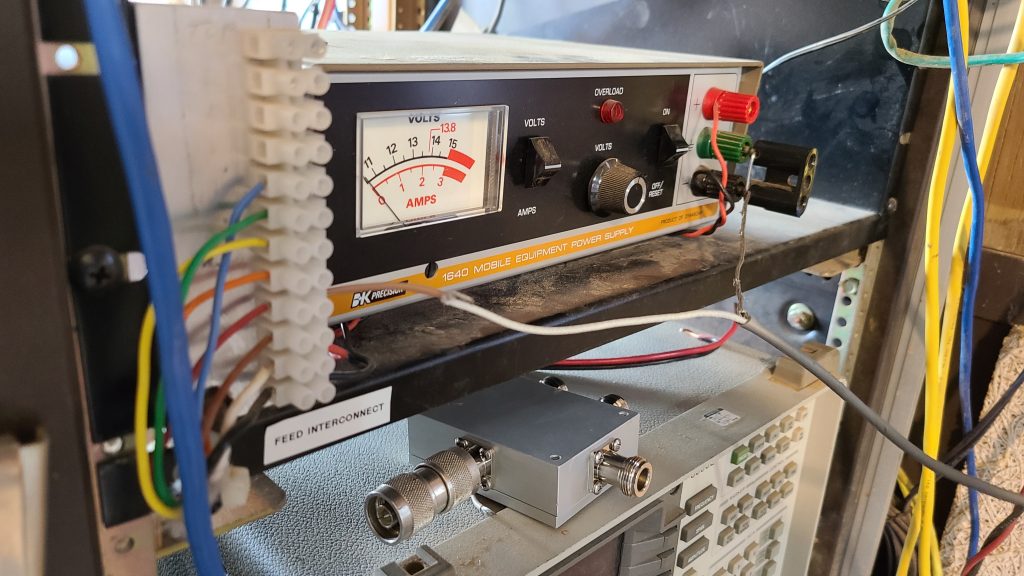
Ray also brought back the Electronic Keyer and Paddle for the FT736 moon bounce CW mode.
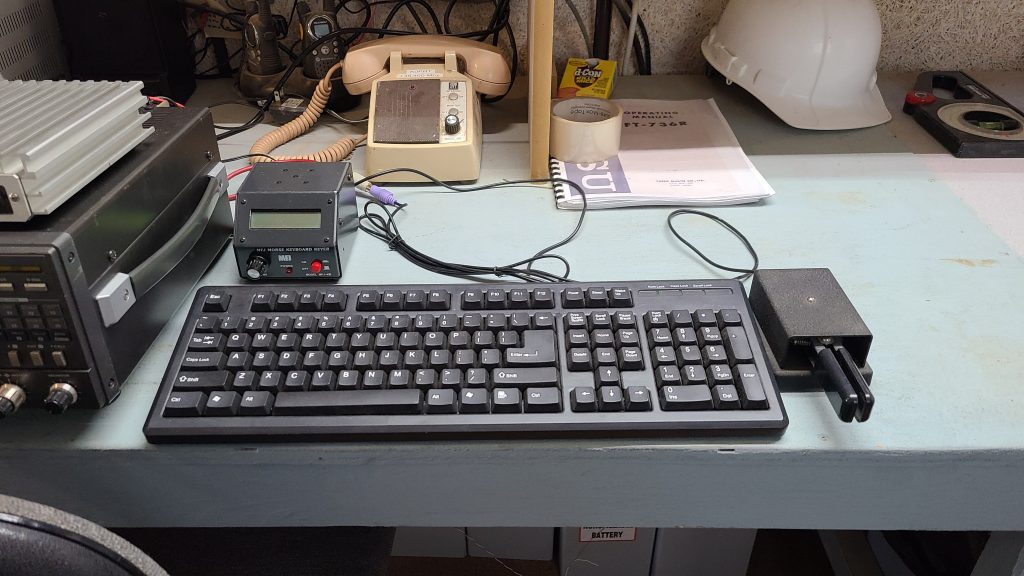
Once all this equipment was installed, we climbed the tower and replaced the bad swivel joint on the down feed coax with a short segment of very flexible RG8X cable to allow the cable wrap. Because this is the same impedance as the main hard line coax and very short it has insignificant loss to the signal.
We then called Myron Babcock to test the equipment. We pointed the dish at Colorado Springs and at first did not hear his signal. He swung his antenna around to point at Pike’s Peak and we did the same and established communication on 1296.1 MHz with clear copy. This proved the overall system viability.
Bill set up his phone app and computer program for aiming the Hughes Net dish for internet. After using the compass to point the dish to the apps specified Azimuth and Elevation and working the dish around for half an hour, we still couldn’t get the modem to lock up and receive the satellite. More research is needed to make sure we are trying for the correct satellite and have the right coordinates and tools to do the alignment on the next trip. Once we have the Hughes Net system working, we should have high speed internet capability for a number of uses.
Ray has been working on his new radio Astronomy receiver based on a medical signal preconditioner and a stable amplifier/integrator and A/D converter. The receiver will give a greater bandwidth than current SDRs with up to 100MHz of bandwidth.
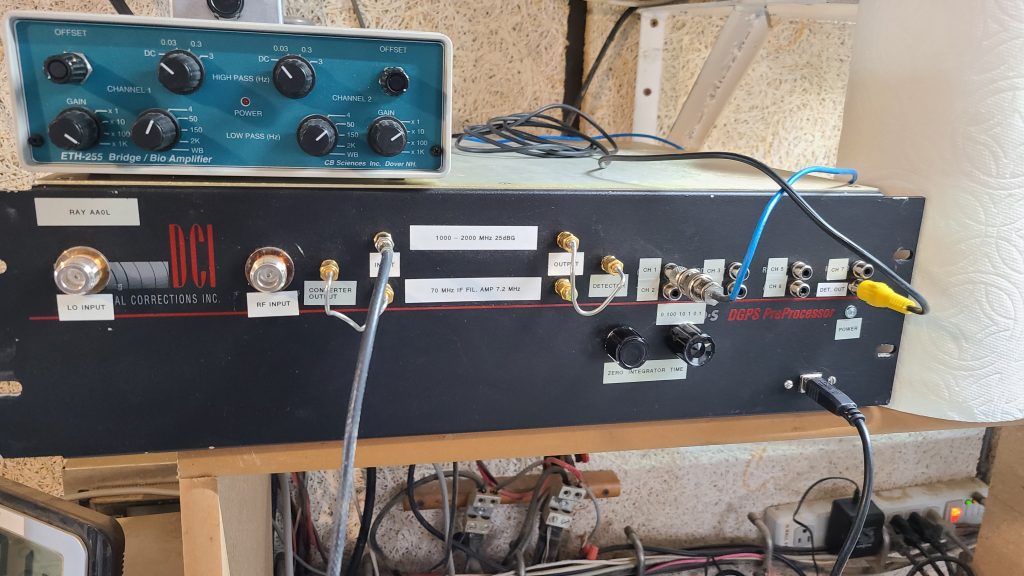
A conversion program is needed to convert the comma delimited tabular output of the A/D to the .Fil file format for radio astronomy. Ray installed the receiver and checked its operation.
We stowed the dish, shut everything down, removed the trash and locked the site. Note that the new service position on the scaffold after the recalibration of the pointing system is 314.5 deg. All old bearings for Beacons and such should be adjusted by -2.5 deg.
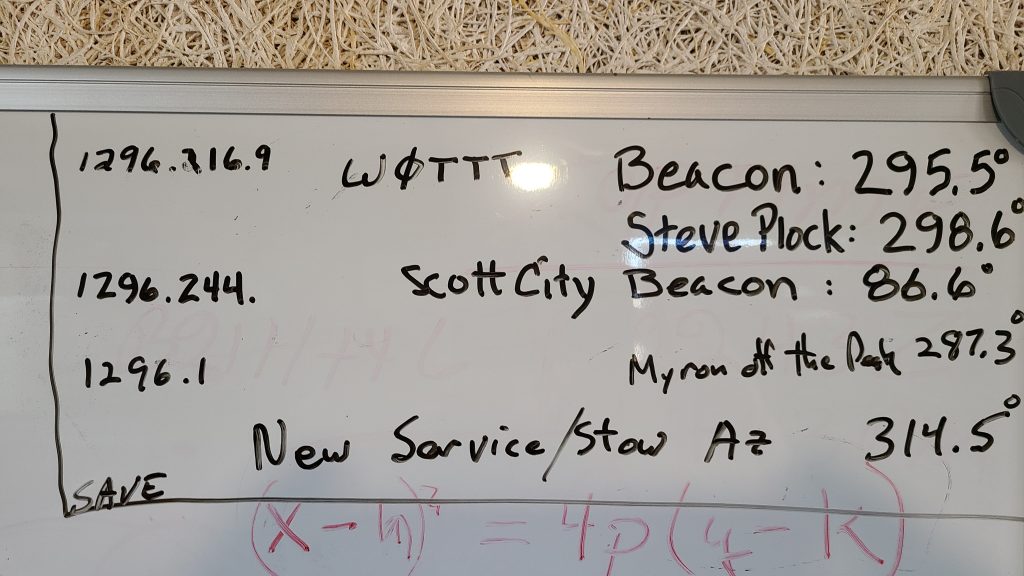
You can read a PDF version of this report here: 2020-10-31-Plishner-site-trip-summary-v2-.pdf